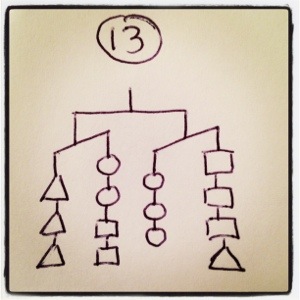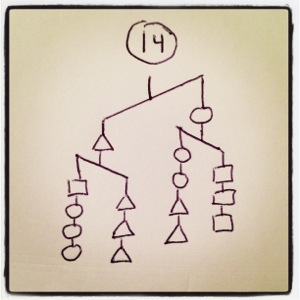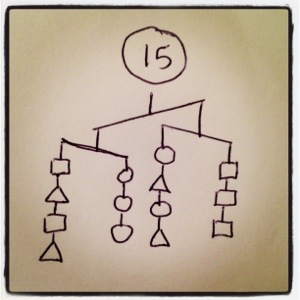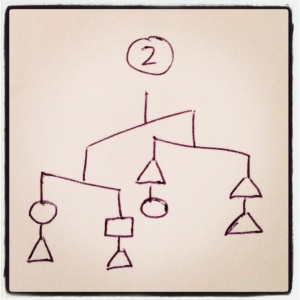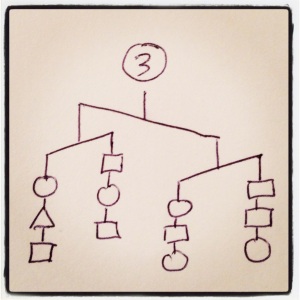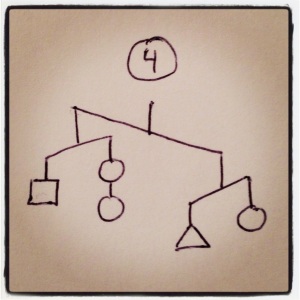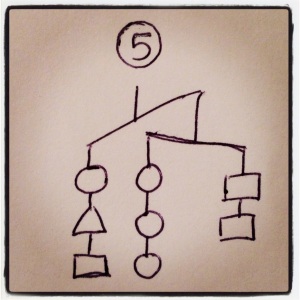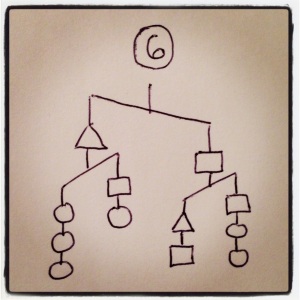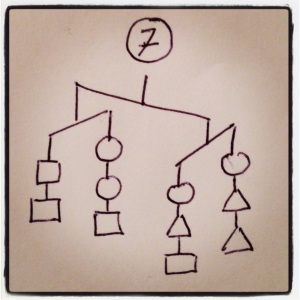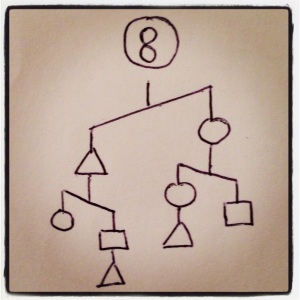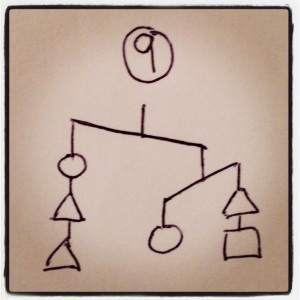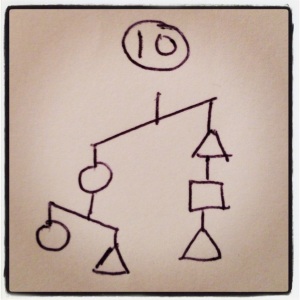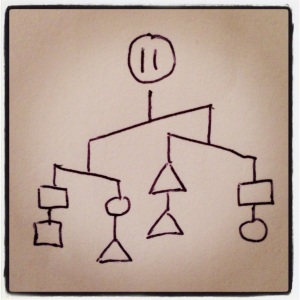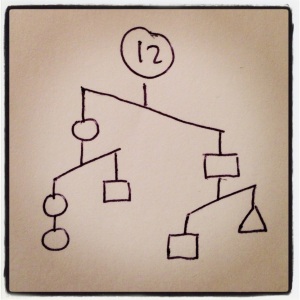I’m really digging these imbalance problems I came up with. Friday was our last day before spring break, and I worked on them with every one of my classes. They liked the puzzles, but the examples I had were a bit too easy, so our real goal was creating good imbalance problems of our own, which is way harder than solving them. My 5th graders had the best ideas for tweaking the puzzles and making new ones. It was cool for them to realize you couldn’t just draw a picture, because sometimes they were impossible, and other times they didn’t give enough information. I’ll hopefully post some of their puzzles after break.
I’ve been working the last two days on my own puzzles, and I’ve never had a better time working with inequalities in my life. They have a way of sneaky way of revealing information that I’m really liking. 2x<y+z tells you some interesting stuff, for example. Further down I’ll talk about how I write them, what makes for a good puzzles, and the puzzle-writing contest I’m having, but right now, why don’t you try some out? I’m especially proud of 6, 9, 10, 11, and 12. ENJOY!
In each case, order the three shapes by weight
Fun, right? As I’ve said, I’m offering a prize for great imbalance puzzle-writing. My favorite two puzzlists will receive a print of their choosing from the Stars of the Mind’s Sky series, up to 12″x12″. Just post your problem(s) in the comments or email lostinrecursion@gmail.com.
 So what makes a good puzzle? It’s a matter of taste (like a lot of mathematics actually), but I tend to like my puzzles pretty simple. A big, messy, just plain hard puzzle is just a hassle, but something compact and tricky to untangle, now that’s what I like. I love when a puzzle requires me to think in a new way or exploit some clever little detail I hadn’t considered. Nathan Chow sent me a really clever puzzle design that implements “entangled imbalances,” which I completely love. Doesn’t it inspire you to write your own? I could have cropped it so it didn’t look like an iPhone app, but I love art that reveals the creative process.
So what makes a good puzzle? It’s a matter of taste (like a lot of mathematics actually), but I tend to like my puzzles pretty simple. A big, messy, just plain hard puzzle is just a hassle, but something compact and tricky to untangle, now that’s what I like. I love when a puzzle requires me to think in a new way or exploit some clever little detail I hadn’t considered. Nathan Chow sent me a really clever puzzle design that implements “entangled imbalances,” which I completely love. Doesn’t it inspire you to write your own? I could have cropped it so it didn’t look like an iPhone app, but I love art that reveals the creative process.
In case you’re wanting tips for writing these puzzles, I’ll tell you about my process. I usually start with a single idea or part of the picture. The key is thinking about what information it gives the solver, and what other information they’ll need to finish the problem. After that it’s just a matter of cleverly revealing that information and piecing them together. Maybe solving the problems above in order will give you a sense of the new ideas I had and was able to wrinkle in.
I hope you’re loving these as much as I am, and I’m dying to see your creations. Mostly because I want some to solve!!!
